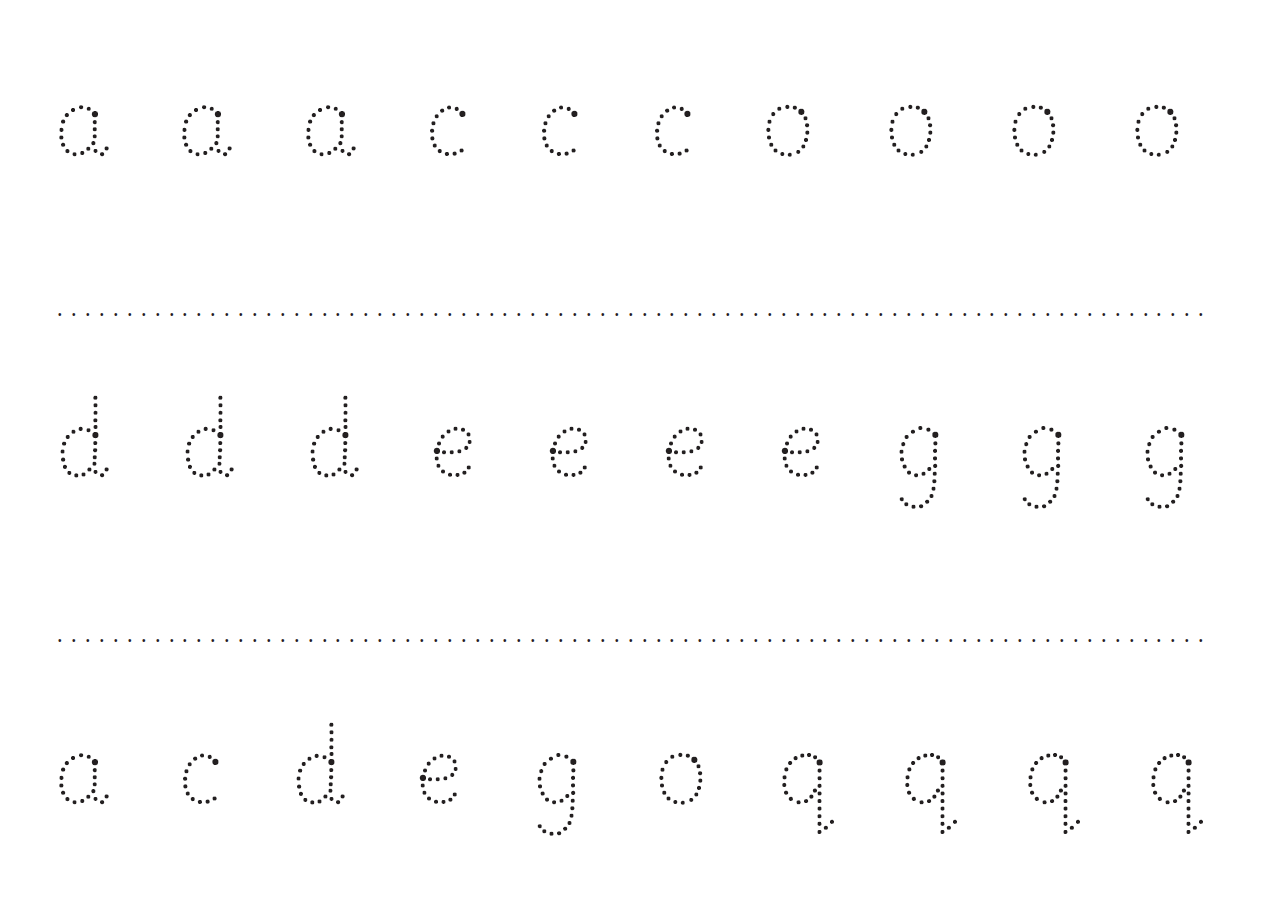This anticlockwise letters worksheet helps children to practise forming letters that require an anticlockwise motion.
Pupils can go over the dotted letters to practise, plus there’s a blank space below to write each letter from scratch.
Anticlockwise letters
This worksheet covers the following letters: a, c, o, d, e, g, q.
Navigating these letters can be challenging for young learners. Understanding the intricacies of them is a pivotal step in the development of a child’s handwriting skills.
Arcs and circles
Anticlockwise letters predominantly involve arcs and circles, which demand a more refined control of hand movements. For children who are still honing their fine motor skills, mastering the smooth curvature of these letters can be a tricky task.
Sequential movements
The formation of anticlockwise letters requires a sequence of precise movements. Children must learn to start at a specific point, follow a designated path, and conclude in a controlled manner. This sequential nature adds an element of complexity to the letter formation process.
Directional Awareness
Anticlockwise movements may initially challenge a child’s spatial awareness. Recognising and consistently reproducing these movements accurately demands a certain level of cognitive development, making this a valuable exercise for enhancing spatial understanding.
Overcoming reversals
Some letters, like ‘d’ and ‘b,’ can be prone to reversal errors. Teaching children to distinguish between these letters helps them overcome common challenges in orientation and reinforces the importance of proper letter formation.
Jelly and Bean’s reading scheme follows the phonic progression of the UK government’s Letters and Sounds, including the introduction of the first 100 high-frequency words, followed by the next 200 words.
Browse more advice for teaching handwriting.














